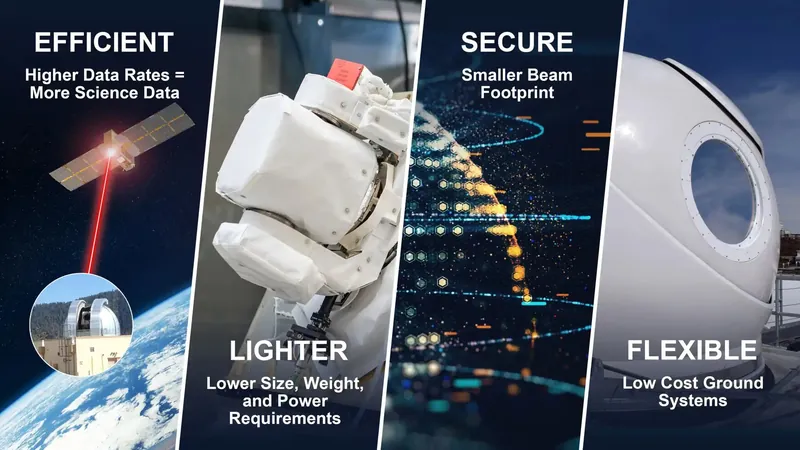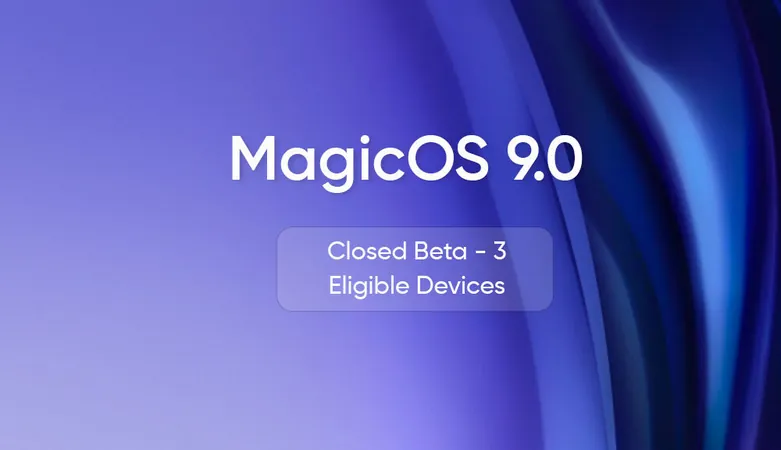
NASA's TBIRD Breaks Records and Revolutionizes Laser Communication from Space!
2024-09-25
Author: Rajesh
Introduction
In a groundbreaking achievement, NASA's TBIRD (TeraByte InfraRed Delivery) demonstration, aboard the PTD-3 (Pathfinder Technology Demonstrator-3) spacecraft, has successfully completed its mission. Over the past two years, TBIRD has shattered records in the realm of laser communications, proving that the future of data transmission from space is brighter than ever.
Mission Overview
Launched in May 2022 on SpaceX's Transporter 5 mission, the PTD-3 spacecraft entered low-Earth orbit, shortly thereafter initiating its revolutionary laser communications signals directed toward an optical ground station in Table Mountain, California. This mission has set a new standard by highlighting the capabilities of laser communications compared to traditional radio frequency systems. While radio frequencies have long been the standard, laser communications can transmit vast amounts of data using infrared light, making it a game-changer for scientific exploration missions that require large data exchanges.
Record-Breaking Data Transmission
Throughout 2023, TBIRD continuously pushed the envelope of what's possible, culminating in June when it transmitted a staggering 4.8 terabytes of error-free data in just five minutes. This massive transfer is equivalent to roughly 2,400 hours of high-definition video, delivered at a blistering speed of 200 gigabits per second in a single pass. This feat not only exemplifies the success of the TBIRD but also sets a new benchmark in the field of satellite communications.
NASA's SCaN Program
Moreover, the mission was part of NASA's SCaN (Space Communications and Navigation) program aimed at advancing the efficacy of laser communications technology. The next step for this cutting-edge technology will be its implementation on the Artemis II mission, further integrating laser-based transmissions into NASA’s future exploratory endeavors.
TBIRD Design and Efficiency
One of the remarkable aspects of the TBIRD payload was its design efficiency. It was compact, about the size of a tissue box, yet powerful enough to contain two commercially available telecommunication modems—modified specifically for the harsh conditions of space. Remarkably, the PTD-3 system addressed one of the primary challenges of laser communication: maintaining a precise laser link at high orbital speeds while navigating atmospheric drag.
Unprecedented Accuracy and Speed
The PTD-3 spacecraft achieved unprecedented accuracy in pointing, setting a record for the highest precision ever attained by a NASA CubeSat without employing any moving parts or propulsion systems. The TBIRD payload operated at incredible speeds of up to 17,000 mph, demonstrating the potential for laser communications in future missions.
Conclusion
While the mission was only planned for a duration of six months, TBIRD exceeded expectations by completing its demonstration for over two years. Unfortunately, the mission has now reached its expected conclusion, as the system lacked a propulsion mechanism, meaning it could only operate until its natural orbital decay. As we look toward the future of space exploration and communication, the success of NASA's TBIRD mission holds tremendous promise. This innovative technology is poised to enhance future missions, enabling scientists and researchers to gather and transmit valuable data more efficiently than ever before. Stay tuned, as the advancements in space technology continue to unfold!



 Brasil (PT)
Brasil (PT)
 Canada (EN)
Canada (EN)
 Chile (ES)
Chile (ES)
 España (ES)
España (ES)
 France (FR)
France (FR)
 Hong Kong (EN)
Hong Kong (EN)
 Italia (IT)
Italia (IT)
 日本 (JA)
日本 (JA)
 Magyarország (HU)
Magyarország (HU)
 Norge (NO)
Norge (NO)
 Polska (PL)
Polska (PL)
 Schweiz (DE)
Schweiz (DE)
 Singapore (EN)
Singapore (EN)
 Sverige (SV)
Sverige (SV)
 Suomi (FI)
Suomi (FI)
 Türkiye (TR)
Türkiye (TR)